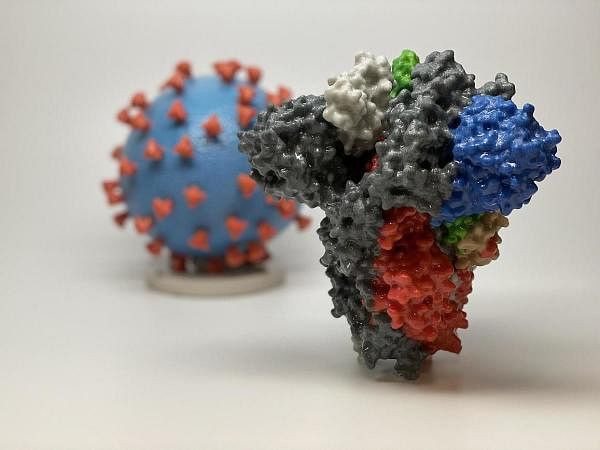
Coronaviruses comprise a large family of viruses that can cause illness in human and animal species. The coronavirus that is presently in the news is named SARS-CoV-2; it causes the respiratory disease named Coronavirus Disease 2019, shortened to COVID-19. Governments and health agencies across the world have framed guidelines to reduce the risk of contracting COVID-19. This article explains how COVID-19 is transmitted and hence why the guidelines say what they do.
COVID-19 is mainly spread by droplet infection. If a person with the infection coughs or sneezes, microscopic droplets are expelled from the respiratory passages. These droplets contain virus particles. People nearby who inhale the virus-laden droplets are at high risk of becoming infected, especially if the viral load in the inhaled particles is high.
It takes 5-7 days, on average, for an infected person to develop symptoms of COVID-19; this is the incubation period of the disease. Infected persons may shed virus during the incubation period; however, the viral load is likely to be small. So the risk of being infectious is small but not zero before symptoms develop.
The commonest symptoms of COVID-19 are fever and cough, each seen in about 80-85 per cent of patients. When COVID-19 manifests, the communicability of disease is highest in the initial week; however, the affected person is likely to remain infectious until full recovery. This is why people with the disease should be treated in specially designated, isolated wards until they recover and are no longer infective.
People with COVID-19 may be in the community for one or more days until they reach a hospital, receive a diagnosis, and are admitted for treatment. While still in the community, they will interact with family, neighbours, and friends. They will mix with strangers in public places and in public transport. Nobody will know that they are infectious until the diagnosis is made. This is why people who are believed to be at risk of developing the disease should self-isolate or be quarantined.
The microscopic droplets that infected persons expel travel only as far as they can be carried by the force of the cough or sneeze. Wind, or breeze from a fan, may carry the droplets further. Usually, it is unlikely that the droplets will travel for more than 2 metres. Therefore, staying away from people, and especially staying away from crowded places, reduces the risk of inhaling infectious droplets in the air. Simply stated, if you do not know who is infected, stay away from everybody.
The microscopic droplets expelled by infected persons are heavier than air. Within minutes of being expelled from an infected person, the droplets settle down on walls, tables, doors, clothing, and other surfaces in the vicinity of the cough or sneeze. So uninfected persons who touch contaminated surfaces and then touch their face run the risk of transmitting the virus from the contaminated surface to the epithelium or mucous membrane in the eye, nose, or mouth. This is why surfaces that might be coughed or sneezed upon should be cleaned regularly, and why uninfected persons should avoid touching their face unless their hands are clean.
Infection is much less likely to be transmitted from contaminated surfaces than from inhaled droplets. This is because droplets on surfaces tend to dry out, killing the virus. Drying occurs faster in hot and dry weather. Drying is also faster on absorbent surfaces such as cardboard, and slower on hard surfaces such as metal or plastic. Cleaning surfaces with alcohol-containing cleaning fluid and washing hands thoroughly with soap can both destroy the virus if surfaces and hands are contaminated.
As of now, it is believed that COVID-19 is not spread by ultramicroscopic aerosol droplets that may remain in the air for hours. This means that uninfected persons who pass by a short while after an infected cough or sneeze are unlikely to inhale infected air.
Summarizing, the most important piece of advice is to stay away from people; you don’t know who is infected.
(Dr Chittaranjan Andrade is Dean, National Institute of Mental Health and Neurosciences Bangalore)
The views expressed above are the author’s own. They do not necessarily reflect the views of DH.